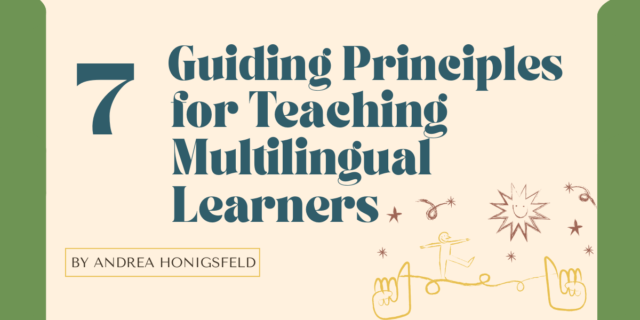
A healthy classroom community is one that is inclusive, supportive, open, and safe for all students to express and be themselves. An open, supportive community allows students to learn fully by feeling comfortable to ask questions, explore as learners, and show up to each lesson authentically and wholly.
How to create a community of learners in a multilingual classroom
Here are five ways you can turn your multilingual classroom of students into a community of learners.
1. Celebrate Diversity
Embrace the richness of linguistic diversity within your classroom. Acknowledge and celebrate the various languages spoken by your students. Have these languages visible around the classroom on anchor charts, classroom rules, and schedules posted around the room. This creates an inclusive environment where everyone feels valued.
2. Create a Multilingual Classroom Library
Integrate materials and books in various languages that authentically represent a variety of cultures. This ensures that every student has access to content that resonates with their background, making the learning experience more engaging and relatable. Reading a wide variety of authentic, diverse texts during a whole-group setting, such as during shared reading, is an impactful way to build community in the multilingual classroom.
3. Peer Collaboration and Language Exchange
Encourage students with different native languages to work together on projects, fostering collaboration and language exchange. This not only helps improve language skills but also builds a sense of community as students learn from each other's diverse linguistic abilities.
4. Cultural Show and Tell
Allow students to share aspects of their culture through presentations or displays. This promotes mutual understanding and respect among peers, breaking down language barriers by connecting through shared experiences and traditions.
5. Inclusive Classroom Routines
Establish inclusive classroom routines that include languages spoken in your classroom. This could include a multilingual morning greeting, bilingual announcements, or incorporating dual-language elements into daily routines. These small but consistent practices help create a sense of unity and shared identity among students.
***
By embracing these tips, educators can create a multilingual literacy classroom that not only focuses on language acquisition but also nurtures a supportive and inclusive community.


